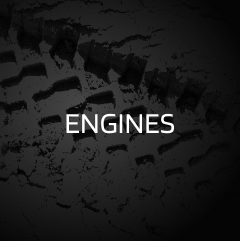 CCA Spares
CCA Spares
Fuel Injection Systems – Precision in Power Delivery
As our exploration of internal combustion engines continues, we turn our attention to a pivotal component that plays a crucial role in optimizing fuel delivery and engine performance: fuel injection systems. Join us in unraveling the intricacies of fuel injection, understanding its evolution, types, and impact on combustion efficiency.
Evolution of Fuel Delivery:
Trace the historical development of fuel delivery systems, from the early carburetors to the modern precision of fuel injection. Understand the limitations of carburetors, leading to the adoption of fuel injection for enhanced fuel atomization and combustion control.
Types of Fuel Injection Systems:
Explore the evolution of fuel injection into various types, each offering unique advantages:
- Throttle Body Injection (TBI): An early form of electronic fuel injection (EFI), TBI systems inject fuel into the throttle body.
- Port Fuel Injection (PFI): PFI systems inject fuel directly into the intake ports, providing more precise control over fuel delivery.
- Direct Fuel Injection (DI): DI systems deliver fuel directly into the combustion chamber, optimizing combustion efficiency.
Components of Fuel Injection Systems:
Dive into the key components of a fuel injection system, including:
- Fuel Injectors: These precision components spray fuel in a controlled manner, ensuring efficient combustion.
- Fuel Pump: The fuel pump pressurizes fuel for delivery to the injectors.
- Engine Control Unit (ECU): The ECU processes data from sensors to determine the optimal fuel injection timing and duration.
Advantages of Fuel Injection:
Explore the advantages that fuel injection systems offer over carburetors:
- Improved Fuel Atomization: Fuel injection systems atomize fuel more effectively, promoting better combustion.
- Precise Control: Electronic control allows for precise tuning of fuel delivery based on various engine parameters.
- Enhanced Fuel Efficiency and Emissions: Optimized combustion results in improved fuel efficiency and reduced emissions.
Challenges and Innovations:
While fuel injection systems offer significant benefits, they also face challenges such as carbon deposits and injector clogs. Learn about innovations, including direct injection technologies and fuel additives, addressing these challenges.
Electronic Control and Sensors:
The advent of electronic control has revolutionized fuel injection systems. Understand how sensors, such as oxygen sensors and mass airflow sensors, provide real-time data to the ECU, allowing for dynamic adjustments to fuel delivery.
Common Rail Direct Injection (CRDI):
CRDI is a variant of direct fuel injection that uses a common rail to deliver fuel to multiple injectors. Explore the advantages of CRDI, including improved fuel efficiency and reduced engine noise.
Fuel Injection and Performance:
In high-performance applications, fuel injection plays a crucial role. Explore how fuel injection systems contribute to the performance of sports cars and racing vehicles, optimizing power delivery and responsiveness.
In conclusion, fuel injection systems represent a pinnacle of precision in delivering fuel to internal combustion engines. This article has provided a comprehensive exploration of their evolution, types, components, and impact on combustion efficiency. Stay tuned for the next installment as we continue our journey through the intricate components of internal combustion engines.

